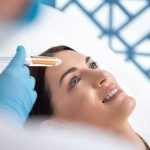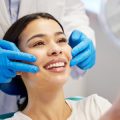1. Understanding PRP Therapy for Hair Loss
Platelet-Rich Plasma (PRP) therapy has quickly become one of the most talked-about treatments for hair loss in the United States. But what exactly is PRP therapy, and why are both men and women turning to it for help with thinning hair? PRP is a minimally invasive procedure that uses your own blood’s platelets—tiny cell fragments rich in growth factors—to stimulate hair follicles and promote new hair growth. The process begins with a simple blood draw, after which your blood is spun in a centrifuge to separate out the platelet-rich plasma. This plasma is then carefully injected into targeted areas of the scalp where hair thinning or shedding is occurring.
The science behind PRP therapy lies in the natural healing properties of platelets. When concentrated and reintroduced to the scalp, these growth factors can help awaken dormant hair follicles, boost circulation, and encourage healthier, stronger hair growth over time. As more Americans seek non-surgical and drug-free solutions for hair loss, PRP’s popularity continues to soar—especially among those who want a natural approach without significant downtime. In this article, we’ll explore whether PRP therapy works differently for male and female hair loss, looking at the science, clinical experiences, and what patients should realistically expect.
2. Common Causes of Hair Loss in Men and Women
Understanding the underlying reasons for hair loss is crucial when considering PRP therapy, as the effectiveness can vary based on these root causes. Both men and women experience hair thinning, but the triggers often differ due to biological and lifestyle factors. Below, we’ll explore the top causes of hair loss in both genders and highlight how these differences might impact treatment outcomes.
| Cause | Men | Women |
|---|---|---|
| Genetics (Androgenetic Alopecia) | Most common; male pattern baldness typically starts with receding hairline and crown thinning | Also common; female pattern usually involves diffuse thinning across the scalp without a receding hairline |
| Hormonal Changes | Less frequent after puberty except in cases of testosterone imbalance | Very common during pregnancy, menopause, or due to conditions like PCOS |
| Lifestyle Factors (Stress, Diet, Smoking) | Can accelerate genetic hair loss; stress-related shedding also observed | Significant role; crash diets, chronic stress, and iron deficiency more frequently affect women’s hair health |
| Medical Conditions & Medications | Certain medications or illnesses can trigger temporary or permanent hair loss | Autoimmune conditions (like alopecia areata), thyroid issues, and certain medications are notable triggers |
The interplay between these factors means that men’s hair loss is often more predictable and concentrated in specific areas, while women may notice a more gradual, widespread thinning. This difference is essential when evaluating PRP therapy since the treatment’s success can depend on the pattern and cause of hair loss. For example, genetic factors tend to respond differently than hormonal or stress-induced shedding. Understanding your unique situation—and discussing it with a hair restoration professional—can help set realistic expectations for PRP results.

3. How PRP Therapy Is Performed
If you’re considering PRP therapy for hair loss, it’s natural to wonder what actually happens during the procedure—and whether there are any differences in the experience for men and women. Here’s a step-by-step overview of what you can expect at your appointment:
Step 1: Consultation and Assessment
Both male and female patients start with a thorough consultation. Your provider will review your medical history, discuss your hair loss concerns, and determine if you’re a good candidate for PRP therapy. This is also the time to talk about your goals and ask any questions.
Step 2: Blood Draw
The process begins with a simple blood draw, usually from your arm—just like a routine lab test. The amount taken is minimal and safe for both men and women.
Step 3: Preparing the Platelet-Rich Plasma
Your blood sample is placed in a centrifuge, which spins it at high speed to separate out the platelet-rich plasma (PRP) from other components. This concentrated plasma contains growth factors that support hair follicle health.
Step 4: Scalp Preparation
Before injections, your scalp will be cleaned thoroughly. A numbing agent or cooling spray may be applied to keep you comfortable during the procedure—this applies equally to both genders, as everyone’s sensitivity levels vary.
Step 5: PRP Injections
The prepared PRP is injected directly into targeted areas of your scalp where hair thinning or loss is most noticeable. The injection pattern may differ slightly between men and women due to common patterns of hair loss (for example, receding hairlines in men vs. diffuse thinning in women), but the technique remains essentially the same.
What Does It Feel Like?
Most people describe the sensation as mild discomfort or a slight pinch. The entire session usually takes less than an hour, making it convenient for busy lifestyles.
Aftercare Tips
No matter your gender, aftercare instructions are straightforward: avoid washing your hair for several hours, skip strenuous exercise for a day or two, and protect your scalp from sun exposure. Your provider will give you personalized guidance based on your specific needs.
Overall, the PRP process is safe, minimally invasive, and similar for both men and women—with only minor adjustments based on individual patterns of hair loss. This personalized approach helps ensure optimal results for every patient.
4. Does PRP Therapy Work Differently for Men and Women?
When it comes to PRP (Platelet-Rich Plasma) therapy for hair loss, one of the most common questions is whether men and women respond differently to treatment. While PRP is widely used as a non-surgical option for both male and female pattern hair loss, research and clinical experience suggest there are some key differences in outcomes between the two groups.
What Does Current Research Say?
Several studies have examined how effective PRP therapy is for male and female patients. Generally, both men and women can benefit from PRP treatments; however, the degree of improvement and speed of response may vary. Some research indicates that women with diffuse thinning or early-stage hair loss often see more noticeable improvements than men with advanced male pattern baldness. This may be due to the differences in hair loss patterns and underlying causes.
Key Differences in PRP Response: Men vs. Women
| Factor | Men | Women |
|---|---|---|
| Common Hair Loss Type | Androgenetic alopecia (pattern baldness) | Diffuse thinning, female pattern hair loss |
| Typical Age of Onset | Earlier (20s-30s) | Later (30s-50s) |
| Response to PRP | Good for early/intermediate stages; less effective in severe cases | Often favorable, especially with diffuse thinning or early stages |
| Main Influencing Factors | DHT sensitivity, extent of hair follicle miniaturization | Hormonal changes, overall scalp health, underlying medical conditions |
Factors That May Influence Outcomes
The effectiveness of PRP therapy can depend on several factors beyond gender:
- Stage of Hair Loss: Earlier intervention typically leads to better results for both men and women.
- Underlying Health Conditions: Hormonal imbalances (like PCOS in women or low testosterone in men) can affect outcomes.
- Lifestyle Habits: Nutrition, stress levels, and overall health play a role in how well someone responds to PRP treatments.
- Treatment Protocol: Frequency and consistency of PRP sessions may impact results.
Takeaway for Patients Considering PRP Therapy
If you’re considering PRP therapy for hair loss, understanding these gender-related differences—and discussing your individual case with a qualified provider—can help set realistic expectations. Both men and women can achieve satisfying improvements with PRP, but personalized assessment is key to maximizing your success.
5. What to Expect: Results, Side Effects, and Aftercare
Typical Results for Men and Women
Many people considering PRP therapy for hair loss want to know what kind of results they can expect. While both men and women in the U.S. report improvements in hair density and thickness after PRP treatments, the degree of improvement can vary based on individual factors such as the underlying cause of hair loss, age, genetics, and how early treatment begins. Generally, men may notice a slowdown in pattern baldness progression, while women often see enhanced volume and a reduction in overall thinning. Most patients begin to see visible results within three to six months after their initial series of treatments.
Potential Side Effects
PRP therapy is considered safe since it uses your own blood, reducing the risk of allergic reactions or serious complications. However, mild side effects are possible. Both men and women may experience temporary scalp tenderness, redness, swelling, or slight bruising at the injection sites. Some individuals notice minor itching or a tingling sensation post-procedure. Serious side effects are rare but can include infection or injury to blood vessels or nerves if performed by an inexperienced provider. Its important to choose a licensed professional familiar with PRP protocols to minimize risks.
Aftercare Tips Tailored for Men and Women
Following your PRP session, taking care of your scalp is crucial for optimal results. For both men and women in the U.S., here are some practical tips:
- Avoid washing your hair for at least 24 hours after treatment to allow the PRP to fully absorb into your scalp.
- Skip harsh hair products and treatments, like chemical dyes or styling tools that use heat, for several days post-treatment.
- Avoid direct sun exposure on your scalp for a few days; consider wearing a hat if you need to be outdoors.
- Men who shave their heads should wait until any redness or sensitivity subsides before using razors or electric clippers.
- Women may want to avoid tight hairstyles, such as ponytails or buns, that could stress newly treated follicles.
- If you experience discomfort, over-the-counter pain relievers like acetaminophen (Tylenol) are generally safe—avoid NSAIDs like ibuprofen unless your provider says otherwise.
When to Contact Your Provider
If you notice unusual swelling, significant pain, or signs of infection such as pus or fever, contact your healthcare provider promptly. Most people can resume normal activities right away, but following these guidelines helps maximize your treatment benefits and reduces potential complications.
6. Is PRP Right for You? Key Considerations
Deciding whether Platelet-Rich Plasma (PRP) therapy is a suitable solution for your hair loss depends on several important factors. Both men and women considering this innovative treatment should take time to assess their candidacy, understand the potential costs, and carefully select a qualified provider in the United States.
Assessing Your Candidacy for PRP Therapy
PRP therapy is generally most effective for individuals experiencing early-stage hair thinning or mild to moderate hair loss, regardless of gender. If you have areas of active hair follicles—meaning there’s still some hair present—PRP can often help stimulate regrowth and slow further loss. However, results may vary based on the underlying cause of your hair loss, your overall health, age, and expectations. A thorough medical evaluation by a hair restoration specialist is essential to determine if PRP is right for your unique situation.
Understanding the Costs
In the U.S., PRP treatments for hair loss are typically considered elective and are not covered by insurance. The cost can range from $500 to $1,500 per session, and multiple sessions are usually recommended for optimal results. While this investment can feel significant, many patients find the natural approach and minimal downtime worthwhile. Be sure to ask about package pricing or payment plans during your consultation.
Choosing a Qualified PRP Provider
Selecting an experienced provider is key to achieving safe and satisfactory outcomes. Look for board-certified dermatologists or physicians who specialize in hair restoration and have extensive experience with PRP therapy. Ask about their training, success rates, patient testimonials, and see before-and-after photos if available. It’s also wise to schedule an in-person consultation, where you can discuss your goals, review your medical history, and receive honest feedback about what to expect.
Ultimately, making an informed decision starts with open communication. Don’t hesitate to ask questions or express concerns during your consultation. A reputable provider will prioritize your safety and satisfaction—helping you decide if PRP therapy aligns with your needs and expectations as either a man or woman dealing with hair loss.


